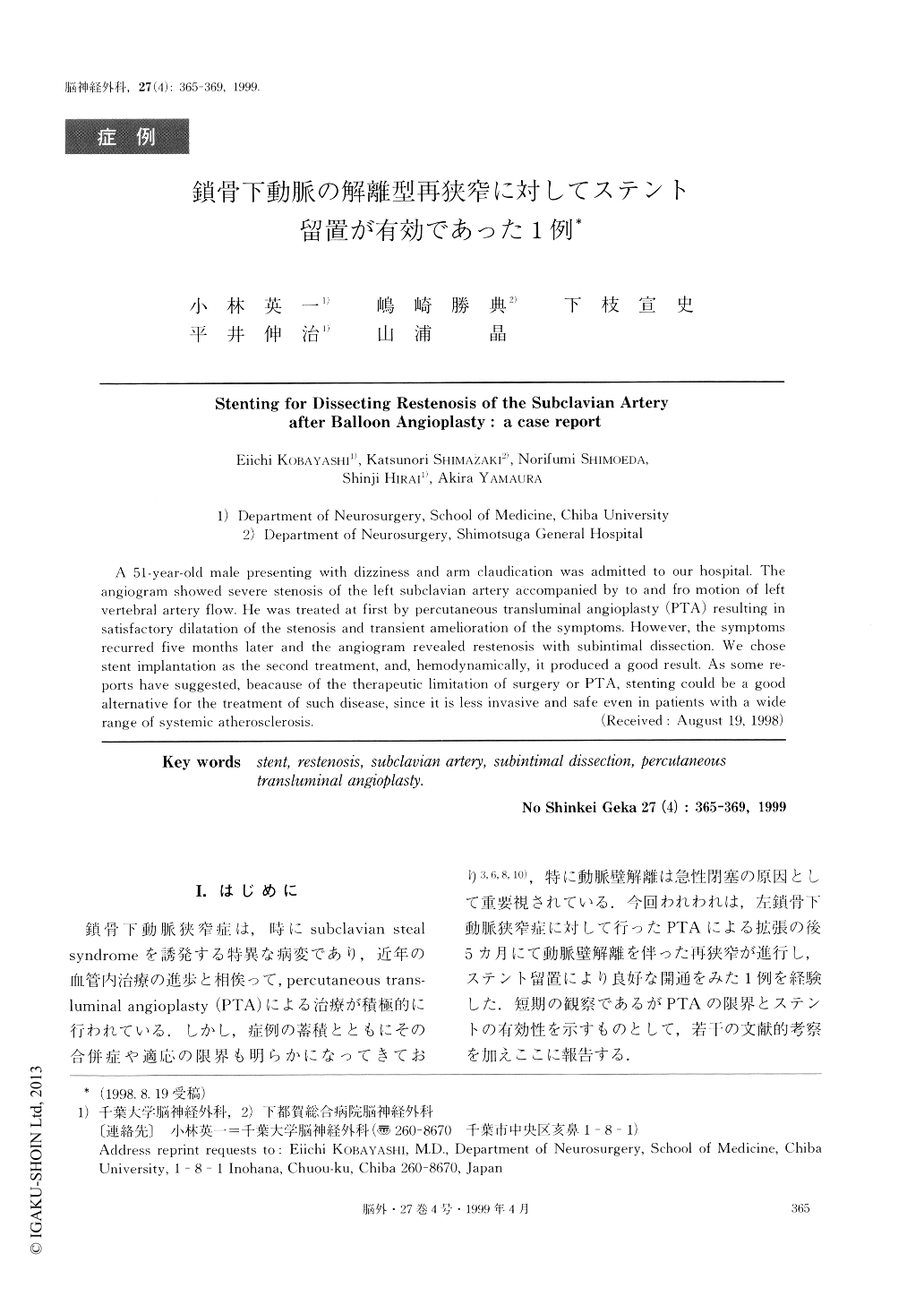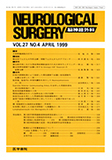Japanese
English
- 有料閲覧
- Abstract 文献概要
- 1ページ目 Look Inside
I.はじめに
鎖骨下動脈狭窄症は,時にsubclavian stealsyndromeを誘発する特異な病変であり,近年の血管内治療の進歩と相俟って,percutaneous trans-luminal angioplasty(PTA)による治療が積極的に行われている.しかし,症例の蓄積とともにその合併症や適応の限界も明らかになってきており3,6,8,10),特に動脈壁解離は急性閉塞の原因として重要視されている.今回われわれは,左鎖骨下動脈狭窄症に対して行ったPTAによる拡張の後5ヵ月にて動脈壁解離を伴った再狭窄が進行し,ステント留置により良好な開通をみた1例を経験した.短期の観察であるがPTAの限界とステントの有効性を示すものとして,若干の文献的考察を加えここに報告する.
A 51-year-old male presenting with dizziness and arm claudication was admitted to our hospital. Theangiogram showed severe stenosis of the left subclavian artery accompanied by to and fro motion of leftvertebral artery flow. He was treated at first by percutaneous transluminal angioplasty (PTA) resulting insatisfactory dilatation of the stenosis and transient amelioration of the symptoms. However, the symptomsrecurred five months later and the angiogram revealed restenosis with subintimal dissection. We chosestent implantation as the second treatment, and, hemodynamically, it produced a good result. As some re-ports have suggested, beacause of the therapeutic limitation of surgery or PTA, stenting could be a goodalternative for the treatment of such disease, since it is less invasive and safe even in patients with a widerange of systemic atherosclerosis.

Copyright © 1999, Igaku-Shoin Ltd. All rights reserved.


